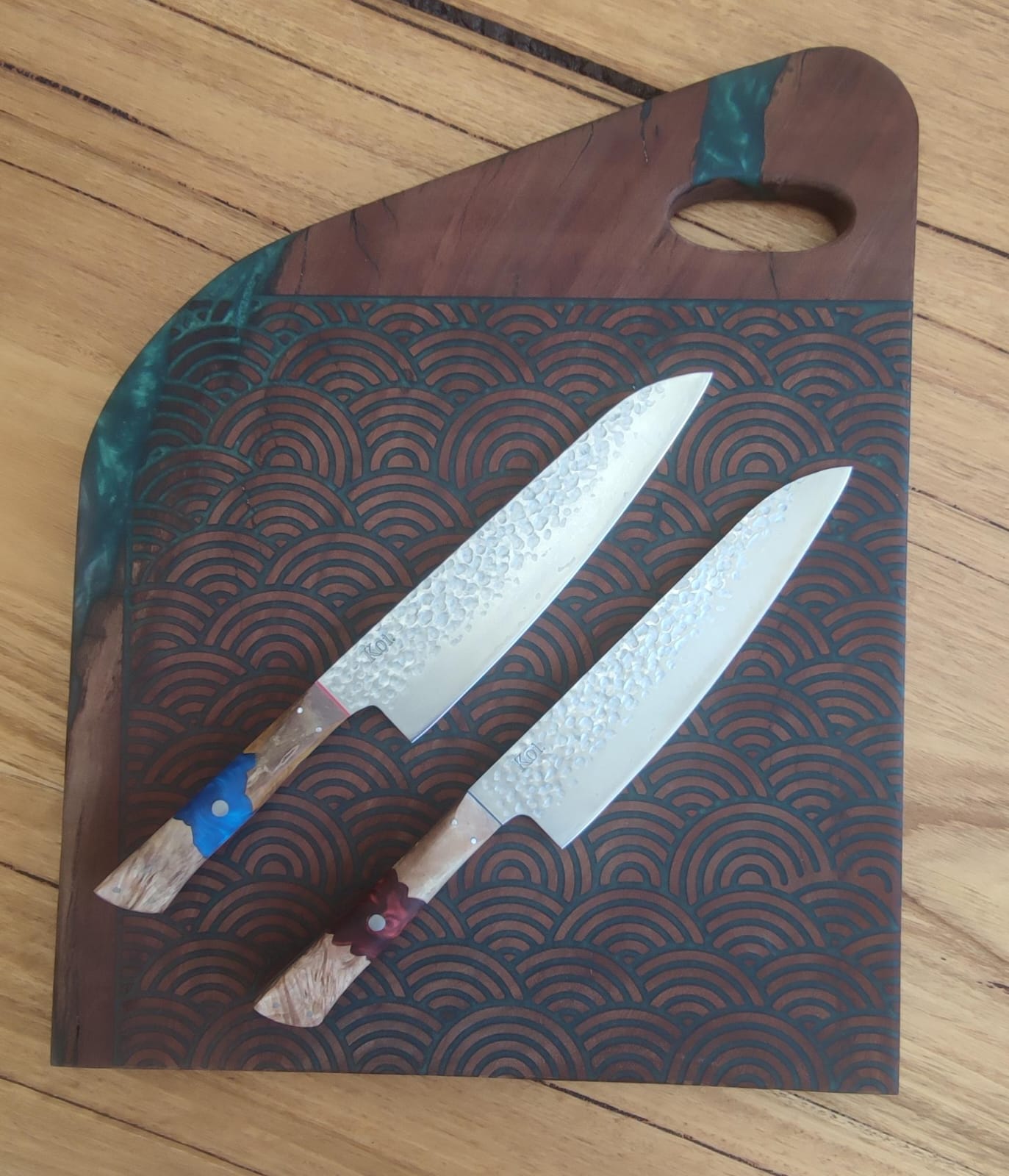If you're learning to make knives as a passion or looking for an excellent blade, you'll want to be sure yours is well-made.
The blade's many essential qualities will influence whether your knife will break or become blunt. Selecting the proper steel grade for the knife-edge is critical, depending on your need.
Qualities that distinguish stainless steel include corrosion resistance, heat resistance, toughness, cleanliness, and more. There are five main varieties of stainless steel, with the chemical properties of each determining the differences.
- Martensitic.
- Ferritic.
- Duplex.
- Austenitic
- Precipitation hardening steels.
Martensitic metal is stainless steel with exceptional hardness, corrosion resistance, and durability. These characteristics make martensitic steel an excellent choice for various applications, including knife making.
In the following sections, let's cover the features of Martensitic steel, its composition, its benefits over other steel types, and its uses in manufacturing.
Composition of Martensitic Steel
The significant component of martensitic steel, like most stainless steel, is chromium, which contributes about 11.5-18% of its structure. Carbon and nickel are also popular components that constitute Up to 1.2 percent of Martensitic.
This form of steel has a robust molecular structure due to the high carbon content, but the absence of nickel renders it less corrosion resistant. Other metals such as manganese, molybdenum, and nickel are also used in small quantities.
Heat Treatment and Rapid Cooling - Martensitic Grades
The most prevalent martensitic stainless steel grades are 410, 420, and 440A. The heat treatment of these martensitic stainless steels is similar to that of high carbon steel alloys. The carbon content determines the overall quenched strength.
High temperatures harden the material, which is then quickly cooled. Because martensitic alloys have a high hardenability, they are typically called "air hardened."
Because the air-hardened martensitic form is highly brittle, it is usually reheated at low temperatures to stress-relieve the microstructure or at relatively increased heat to soften (temper) the metal to medium hardness grades.
Heating slightly below the alloy's melting point achieves process annealing; heating just above the maximum point with delayed cooling achieves full annealing.
Martensitic Steel Types
Depending on its carbon content, martensitic steel can be further split into two categories.
Low Carbon Martensitic Steel
The carbon percentage of low carbon martensitic steel ranges from 0.05 percent to 0.25 percent. Low-carbon Martensitic steels are more assertive, have better corrosion resistance, and have better forging potential.
High Carbon Concentration Martensitic Steel
High carbon martensitic steel's carbon content is usually between 0.61 percent and 1.50 percent. Because carbon strengthens the molecular structure, steel with a higher carbon content is more robust. However, it makes the metal increasingly brittle, making it difficult to weld or form into different shapes.
Stainless Steel, Type 410
Type 410 stainless steel is martensitic stainless steel that is used for a variety of applications. Screws, hinges, studs, knives, tools, gun clips, micrometer elements, rotor blades, pump rods, nuts, bolts, fittings, bearings, and axles are just a few examples of applications. With minor adjustments in hardening and tempering heat treatments, hardness ranges can be altered.
Finally, steel is an alloy, which means it is made up of carbon and iron. Steel is frequently improved with several other components that provide distinct qualities depending on the product's intended use. i.e., knife production.
If the blade is made entirely of steel, it is carbon steel. As a result, there are critical characteristics to consider when making a knife to ensure that the efficiency of your blade is optimised, such as:
Hardness
Knife steel hardness measures the blade's strength and resistance to persistent deformation. The Rockwell C scale, frequently abbreviated as the HRC, is the industry standard, non-destructive metallurgical testing system for measuring hardness. When selecting suitable knife-producing steel, consider its hardness qualities.
- Western knives are usually softer (HRC 52-56)
- Japanese knives are usually harder (HRC 58-64+)
There is a trade off with hardness though, where the harder the material, the more inflexible the material. This can lead to brittleness and small fractures at the blade edge.
Toughness/Ductility
When a knife is damaged, it is never easy to repair it. Toughness (or ductility) refers to the knife steel's resistance to edge damage such as cracking, fracturing, breaking, or flaking that can occur when the blade is subjected to stress or impact. Your blade's steel will likely have a poor ductility rating if it registers high on the Rockwell C Scale. As a result, the brittler the steel, the more likely it is to break.
Wear Resistance
Wear resistance is frequently linked to the steel's hardness, but it is also influenced by its chemistry. Wear resistance refers to a steel's capacity to withstand edge corrosion caused by abrasive and adhesive wear during cutting. When stiffer aggregates rip or scratch a softer surface, abrasive wear occurs and is the cause of most wear-related defects. Adhesive wear, on the other hand, happens when the debris is shifted from one surface and attaches to another. These types of friction can cause the blade to shred, scrape, and fracture.
Corrosion Resistance
Several external climatic factors, such as dampness, humidity, and salinity, endanger the blade's structure by causing rusting. As a result, corrosion resistance is critical for a steel in order to withstand deterioration. High corrosion resistance, on the other hand, can degrade the overall performance of the blade edge, so keep that in mind when selecting steel for knife manufacture.
Edge Retention
The ability of a steel blade to keep its sharpness over time is referred to as edge retention. You'll need to choose a steel that resists deformation when producing your blade if you want it to have a high level of edge retention. General rule of thumb is the higher the HRC, the longer the edge will last.
So how to make sense of all of this?
No knife is perfect. Instead, each knife has benefits and deficits. The hardest knife in the world will have the sharpest edge, but that edge will be incredibly brittle. If you do not take care of it, you will destroy its edge.
Likewise, softer steel knives will be less likely to fracture, but at the expense of sharpness and edge retention.
We like to think of knife steel like the story of Goldilocks. Not too hard, not too soft, is just right (between 58-61 HRC).
When considering martensitic steel knives, choose higher HRC and be careful of corrosion along the blade edge. Although they can be stainless steel, the lack of nickel will decrease the overall corrosion resistance.




